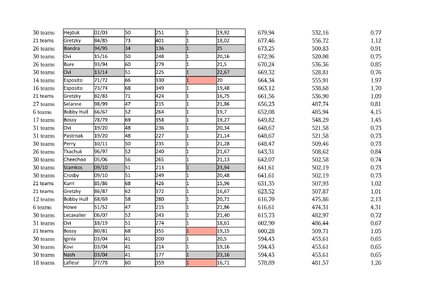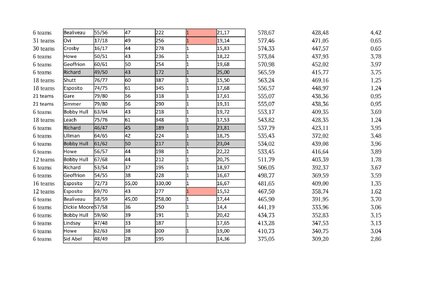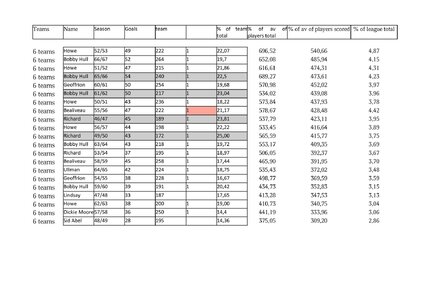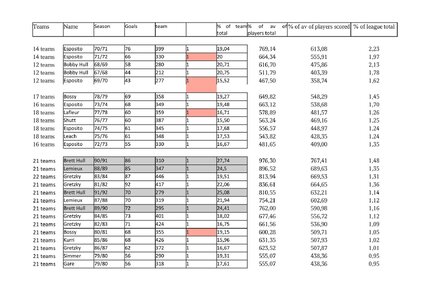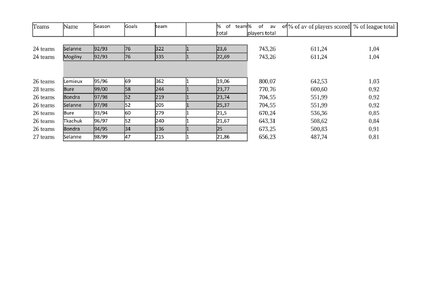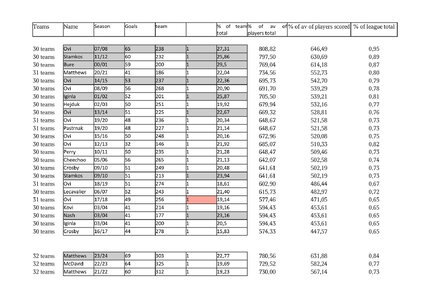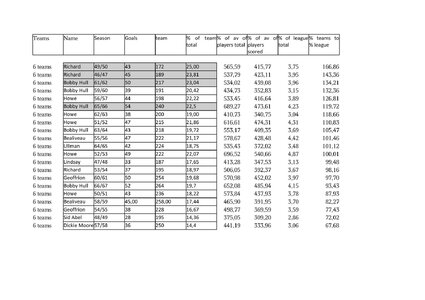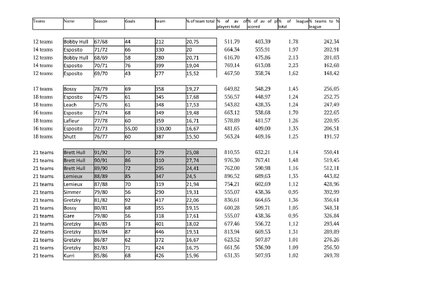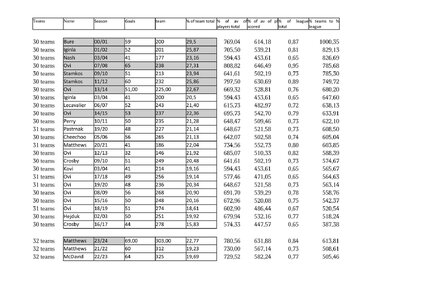Namba 17
Registered User
- May 9, 2011
- 1,711
- 575
The previous one was here The best goalscorers in the NHL - 2
But this time I came with bigger data (from 46/47) and different criterias.
I still have no ideas how to make good tables inside this forum. So, enjoy fotos.
In this post I include table with the best goalscorers 47 - 2024 ranked by ratio to average goals scored by players, which scored at least one goal in the NHL.
In the nexst post ill attach tables differentiated by amount of teams, played in the different time periods.
Youll also find insde % of goals, scored by the best NHL goal-scoreres and his team and all NHL goals and ratio between goals by the best goal-scorer and average goals per player in the corresponding season.
But this time I came with bigger data (from 46/47) and different criterias.
I still have no ideas how to make good tables inside this forum. So, enjoy fotos.
In this post I include table with the best goalscorers 47 - 2024 ranked by ratio to average goals scored by players, which scored at least one goal in the NHL.
In the nexst post ill attach tables differentiated by amount of teams, played in the different time periods.
Youll also find insde % of goals, scored by the best NHL goal-scoreres and his team and all NHL goals and ratio between goals by the best goal-scorer and average goals per player in the corresponding season.


